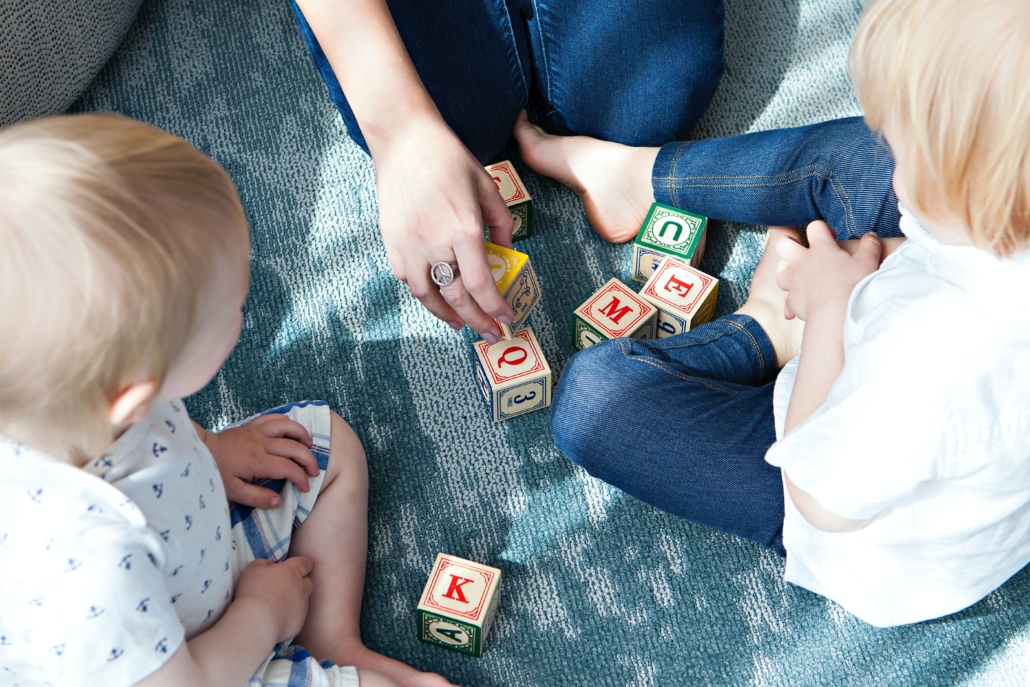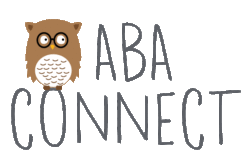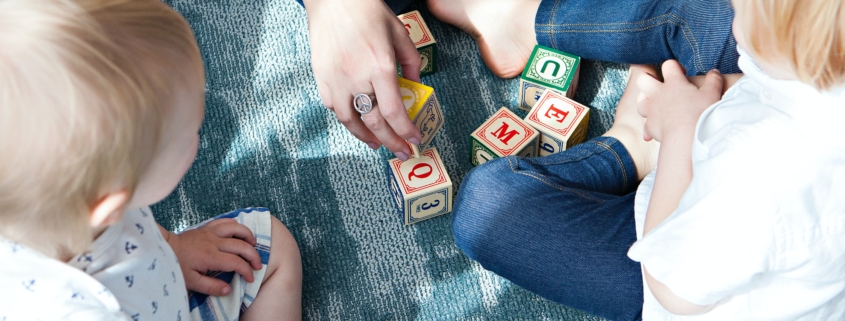Is ABA Best for My Child?
A parent’s perspective of ABA and how it can help.
Shortly after my son was diagnosed with Autism Spectrum Disorder (ASD), I remember sitting in the pediatrician’s office, wondering what to do next. I was exhausted from years of hoping he was “okay” to grieving that he may be different from who I expected. But his diagnosis was a turning point for me; I knew it was time to do something.
I was concerned about some of his unusual behaviors. He would suck on his hands for hours, bang a rattle against his front teeth, or grab at people for attention. Some of the things he did annoyed us. Some of them were obvious attempts to communicate. But, most concerning was that some of his behaviors could escalate or become self-injurious if we didn’t intervene.
As I vented my frustrations about these usual behaviors to my son’s doctor, she graciously shared with me that she, too, had a child with autism and would write a referral for ABA therapy. Then she said, “It’s the only thing that helps.”
That phrase stuck with me. After five years of ABA, I wholeheartedly agree. It’s the only thing that works. But I would add one clause. ABA works best when you find the right ABA provider.
To find the right ABA provider, you need to know what you’re looking for.

Photo by Marisa Howenstine on Unsplash
The easiest way to understand and explain ABA.
ABA stands for Applied Behavior Analysis. It’s about analyzing the function of a behavior. To understand why a behavior occurs, you must understand what happens directly before and after the behavior.
Many ABA therapists teach the ABCs of behavior:
- Antecedent – observing what happens before the behavior
- Behavior – the behavior you are trying to understand
- Consequence – noticing what happens directly after the behavior
Consequences don’t have to be negative; they can be positive too. Awareness of the negative and positive consequences of behavior is beneficial for understanding how to shape behaviors. ABA may sound simple in theory, but it takes a lot of patience in real life.
Learning a new ABA way of parenting.
ABA therapy takes some getting used to—both for your child and you. It requires you to adjust your parenting style. Most of us parent the way we were parented or not parented. When you switch to ABA, you may be unable to use the principles you were raised by or to simply follow your gut. Changing to an ABA parenting style requires humility, teachability, and patience.
It’s hard to admit that your parenting isn’t working with your child. The first thing that struck me about ABA was that my behavior affected my child’s behavior. I needed to be like a detective and understand why I did what I did and how my child responded. I had to notice what my instincts were and suspend them in midair.
Fortunately, you will have a team of ABA therapists led by a Board Certified Behavior Therapist (BCBA) who help guide you. Remaining open to their input is essential to the process.
Parenting from an ABA perspective also requires you to try to understand things from your child’s perspective. As tiring as it can be, it’s also fascinating. It enables you to understand and connect with your child in the long run.
Not all ABA clinics practice the same philosophy.
There is a learning curve to understanding ABA as a parent. In the beginning, I learned there are different ways ABA is delivered. Having an idea of the different philosophies of ABA may help you determine what is a good fit for your child and family.
Highly-structured ABA clinics utilize a lot of table work and routine.
ABA is a relatively new form of therapy, but even within the last 20-25 years, so much has changed. Many of the early therapy centers provided highly structured learning. Some still do. The idea is that structure and routine are highly preferable for individuals with autism. Many ABA clinics are like classrooms where kids must sit down and learn at the table all day long. The phrase “drill and kill” originated in this kind of setting. It may work for some, but others find it incredibly dull.
Early childhood ABA clinics focus on getting pre-schoolers ready for school.
Other ABA providers focus on early childhood but don’t offer services for older kids. Children with autism have more complex needs as they grow into school-age and adolescents. And there are fewer experienced providers available to help them. Some clinics, like ABA Connect, offer early childhood, school readiness, and the social skills needs of older kids.
Play-based ABA clinics, like ABA Connect, pair having fun with making progress!
In recent years, more clinics are emerging with a play-based approach. ABA Connect is the industry leader in playful ABA therapy that happens in a naturalistic setting. This approach considers the needs and wants of the child.
ABA Connect therapists realized long ago that having fun in therapy and making developmental progress are not two mutually exclusive events. ABA Connect’s foundation is built on the idea that what motivates a child helps form positive outcomes for kids and their families. Instead of working against the grain, therapists are working alongside your child to help bring out more of who they are rather than trying to get your child to conform and fit a mold.
Learn more about how ABA Connect offers therapy as unique as your child.
There are many ways to force a child to comply using negative associations. However, wouldn’t you prefer a positive approach? ABA Connect uses positive reinforcement more effectively, kindly, and compassionately than some intense, high-pressure providers.
It is crucial that you find an ABA program that will meet your child’s needs and help you learn how to work with them without shortcutting the process or using punitive reinforcement.
Questions to ask when considering which ABA provider or BCBA to go with:
- Do the therapists tend to have playful, fun, and inviting personalities, and if in a clinic, is the clinic setting welcoming and engaging?
- Do they ask you questions about what your child likes and doesn’t like? Do they ask what your child’s strengths and weaknesses are? These are important things to incorporate into a Behavior Intervention Plan (BIP).
- Do they enjoy being with your child and other children in the clinic? Can they give examples of progress in their treatment plans? Is there hope for a fulfilling life awaiting your child and family?
- Do they have experience working with different communication modalities? Are they flexible and willing to use what your child prefers, even if that means learning an entirely new AAC software program?
- Do they incorporate life skills and community exposure into your plan? So much of what ABA providers teach are developmental skills in progression. Developmental skills build on one another but can’t happen in a vacuum. Are those skills practiced in everyday life? For example, use a towel to dry your hands after you wash them. Or visiting the library without pulling all the books off the shelf and then walking away?
- Are there opportunities to interact with other children to learn peer-to-peer relationships? Things like turn-taking, greeting one another, and working together to play or build something.
Seeing ABA at work!
Last weekend, our family was discussing something we watched on TV. Nathan sat beside me, watching YouTube Kids on his iPad. I couldn’t hear the conversation over the volume. I leaned over and turned the volume down without telling him what I was doing. Nathan then started to pull on my hair and scowl at me.
Honestly, my first response was anger, but I tried not to show it and instead redirected his behavior by grabbing a stuffed animal and pretending to make him sneeze. He began laughing. Shortly after, I realized he was angry that I turned his iPad down without asking or giving him a choice to pause and wait until we finished talking.
This example is just one of many everyday life skills that ABA can help with. It teaches you how to redirect behavior to something fun, empathize with your child, and understand how everyone in the family can adapt to make things easier for everyone.
Finding the right ABA therapist for your child.
After implementing ABA therapy in our family’s life, I can confidently say that it has been a game-changer for us. It has taught us how to understand and communicate with our son in a way we never thought possible. The skills we have learned have helped us create a more peaceful and enjoyable home environment.
If you have a child with ASD, I encourage you to consider ABA therapy. It may seem overwhelming at first, but the benefits are worth it. Remember, finding the right therapist and resources for your child is vital. Don’t give up if you don’t see the changes you want immediately. Keep working with your child’s therapist, and don’t be afraid to make adjustments along the way.
If you have any questions or comments about ABA therapy, please leave them below. The team at ABA Connect is happy to help answer your questions.
And if you found this post helpful, please share it and follow us on social for more content on autism or ABA therapy.
If you are interested in a positive, play-based approach to ABA, contact ABA Connect.

 Photo by Marisa Howenstine on Unsplash
Photo by Marisa Howenstine on Unsplash






Leave a Reply
Want to join the discussion?Feel free to contribute!